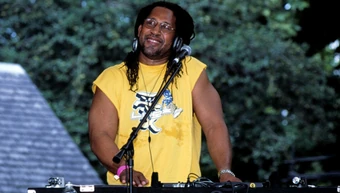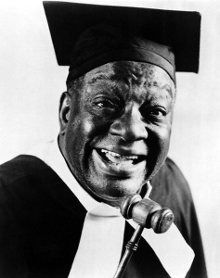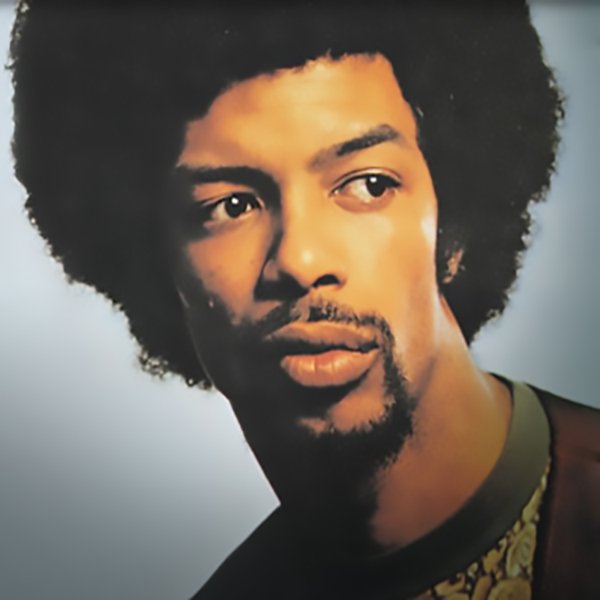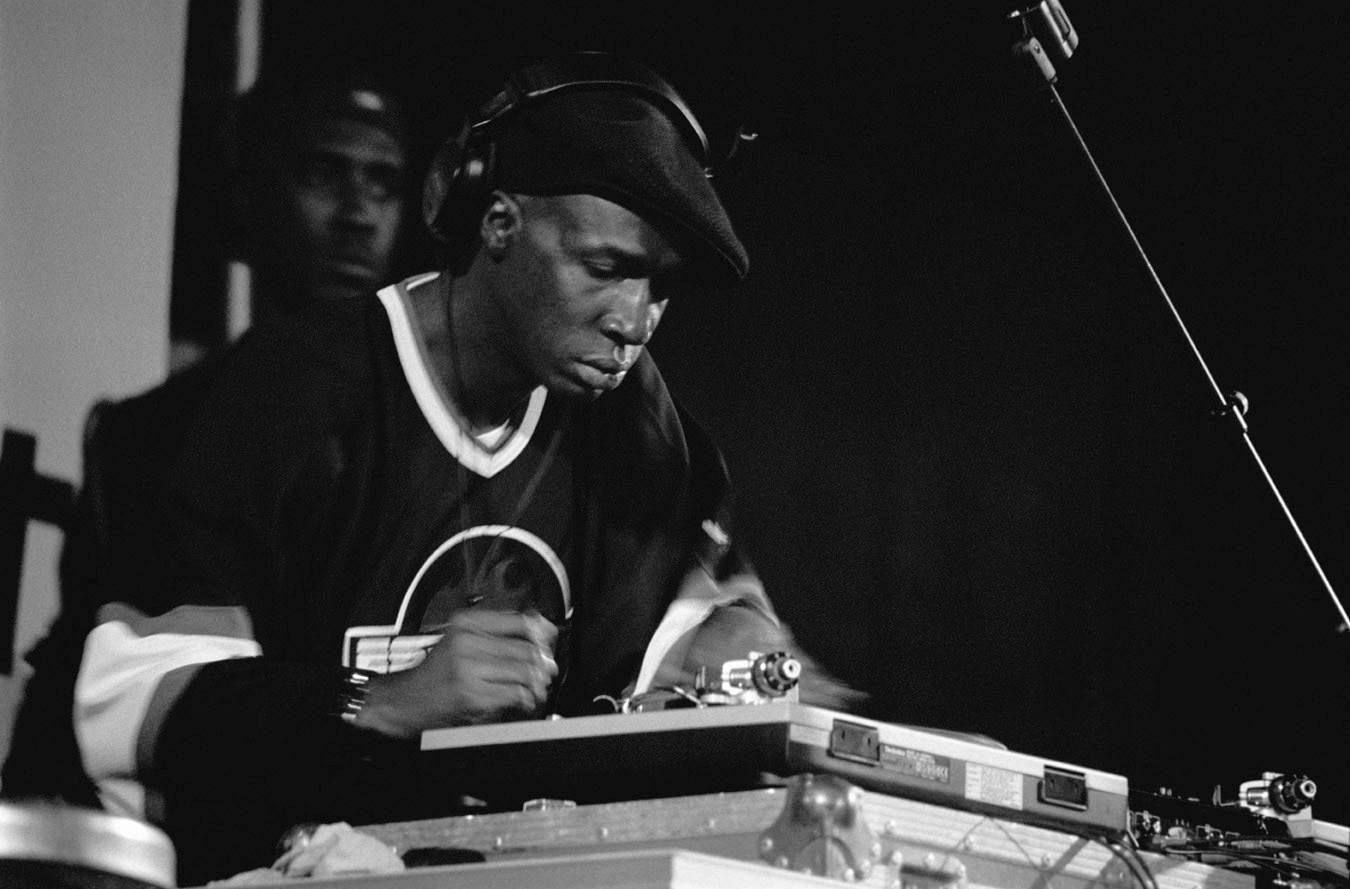
Summer 2020
We live in a time where more and more people are waking up during this summer of 2020, and we witness a new era of our times. Recent events show us that selflessness not arrogance must be the order of the day. Honesty is the best policy in evaluating this year. We see millions of people (over 20 million human beings) unemployed. Tons of folks are going into food banks in desiring food to eat. Water has been shut off in many places of Detroit. We have a narcissistic President who refuses to outline a real, comprehensive response to a medical crisis, while he scapegoats others for his own incompetence. The coronavirus has killed thousands of human beings and infected millions of human beings globally. Many of us are fortunate enough to have financial resources, homes, and food. Yet, others in America and worldwide struggle to get food and are homeless as I write these words. In various locations, folks (of every color) show signs desiring food and money because of their tragic suffering. That is why food banks and other institutions have saved so many lives during this era. We have a sincere empathy for humanity. That is also why revolutionary policies and focused compassionate actions are necessary in establishing authentic solutions. The collaboration of all levels of government without hesitation to help humanity makes sense. Trusting real experts, science, and our common sense to carry through this horrendous time period is a must. We praise wisdom and truth. In our time, there still exists a remnant of heroes who work all of the time to promote human rights, environmental justice, health care, and liberation for the oppressed. One example is how Rev. William Barber has spoken the truth about the right of us to help the oppressed, defeat poverty, and eliminate institutional, systematic racism worldwide. Universal health care is a goal that is legitimate as well. High premiums, many folks restricted of their health care, and millions of human beings lacking health care are not realities that we accept. You can't be a total liberty lover without wanting workers's rights, anti-poverty policies, health care for all, and equal protections under the law. It is what it is.
One of the most strangest encounters that I have dealt with include far right extremists on social media. They are passionate in their views, and some of them are trying to recruit black people to join their abhorrent ways of thinking. Many of them believe in the myth that the free market is nearly infallible, so the social safety net ought to be depleted. One common denominator of many of them is their unwavering support for Donald Trump. Their support is so thick, that they act almost like a cult. They completely ignore Trump's disregard of the rule of law, his disrespect of women, his cursing out of peaceful protesters of police brutality, and his offensive ad hominem attacks against those who disagree with them. Many of these supporters not only use foul, derogatory language (which isn't an example of morality or family values), but they claim to follow Christian values. Christian values are antithetical to the views of Donald Trump. I don't think that Jesus Christ would allow immigrants and children to be locked in cages filled with deplorable conditions. Jesus Christ wouldn't endorse police brutality and racial injustice. Jesus Christ would not call Congresswoman Maxine Waters as having "low IQ" as Trump has done. Jesus would not agree with Trump's suppression of legitimate environmental regulations either. On August 21, 2019, Trump cited a radio host. This host said that many people admire him like a King of Israel. Many of these far right extremists and some members of the "Patriot Movement" (who idolize people like Freemason George Washington and the Deist Thomas Jefferson when they were slave-owners and racists. It is ironic that these "super Patriots" claim to be staunch Christians when many Framers like Jefferson and Paine denied the divinity of Jesus Christ. That is another story) follow the Q movement. The Q or Qanon movement is a cult that believes that Trump is fighting against the Deep State to bring freedom.


That is a lie, because Trump is allied with the same 1% that dominates the majority of the economic, political, and other aspects of Western society. For decades, Trump has been allied with big money interests and corporate leaders. For example, Trump's transition team alone was filled with Washington experts, lobbyists, and many members of think tanks plus political leaders. Many of them are Washington outsiders, Republican insiders, and former military officers who disagree with the course of the Obama administration. Bernie Sanders and others have said that Trump violated his promise to not support the interests of the wealthy and the powerful. Trump has appointed nearly 100 former corporate lobbyists in key positions of many agencies. Alex Azar was part of the Elli Lilly Big Pharma company. Secretary of treasury Steve Mnuchin is part of the financial elite and is the first hedge fund manager to head the Treasury according to the New York Times. Mnuchin is a member of the Skulls and Bones and has ties to many billionaire corporate leaders. Secretary of Commerce billionaire Wilbur Ross work for Rothschild Inc. in the U.S. from 1976 to 2000. Ross is a member of the Wall Street secret group of Kappa Beta Phi that have a yearly private dinner where about 2000 wealthy people carry onward. The establishment is well represented in the Trump cabinet including his NSC staff like CFR member H.R. McMaster and others. Trump has allied with Henry Kissinger, and Kissinger has a relationship politically with Trump's son-in-law and now Assistant to the President, Jared Kushner. So, the lie about Trump being against the establishment is just a lie. Never forgetting that our diversity in America has strengthened America, it is right to stand up for the principles of the general welfare, of altruism, of equality, and of the essence of community.
We should always reject celebrity worship, and we understand that we worship God not America. We respect good Americans who are fighting for truth and justice, but we won't make an idol of America (which is the false doctrine of American exceptionalism. While Trump loves the propaganda of FOX News, he also has openly praise war criminals and enemies of humanity like Andrew Jackson). These pro-Trump extremists are people that I have debated and refuted on social media for years. That is precisely why we shouldn't be distracted by misinformation and deception. We must fight racism, xenophobia, and all injustices. We are clear that we will always care for our neighbors, our friends, and our families. We desire liberty and justice for all. As we see big foundations and large corporations funding both the far right and the neoliberal centrist crowd (in not only limiting political choice on the mainstream level but permitting political agitation), we believe in in embracing independent, progressive thinking.

Many Tea Party leaders have organized protests in Michigan, Ohio, and Kentucky. They want to protest the stay at home order. The problem is that many of these protesters blocked streets and put the lives of other people in danger by being crowded in the streets. Not to mention that many of them waved Confederacy flags and Nazi signs. Michigan, Ohio, and Kentucky were never Confederate states. Also, the Confederate flag is a racist, offensive flag that has nothing to do with legitimate heritage. It has everything to do with racism, bigotry, slavery, and treason. One poll said that 81 percent of Americans endorse social distancing. There are more than 1,600,000 cases of the virus in America. There is no massive expansion of testing in America. Trump is known to lie about the coronavirus. He once called it a hoax. He said that he has it under control, he has no responsibility, and he gave himself a perfect 10 as it pertains to the response to the virus. Trump is a friend of Putin. Putin made it illegal for any Russian Christian to share his or her faith in their own homes (or outside of church). This proves that Putin is anti-religious freedom and a total shill. He is not a fighter for freedom as even some people (even those who claim to be "progressives") claim. Racism and anti-Semitism are at the heart of tons of evil people's wicked ideologies. During the Charlottesville, Virginia 2017 situation, Neo-Nazis with torches spewed anti-Semitic, racist words. There was the Congregation Beth Israel synagogue where Jewish people were trapped and prayed for survival while this was going on. After this, Trump lied and said that there are good people on both sides. This racist remark showed the world what he is. Trump also endorses waterboarding, which is torture. Therefore, I believe in the truth that justice for all is our credo.






Hip Hop 50 Years Later Part 1 (The Beginnings)
Hip hop is a musical genre that has stood the test of time. It is a type of music filled with innovative creativity, constant changing over the generations, and great social power. Hip hop music was birthed in the Bronx, NYC in 1973 during the time of massive deindustralization in New York City. As we approach the 50th anniversary of the birth of hip hop music (which was created by Kool Herc, who has Afro-Caribbean heritage), it is important to realize its origin and impact. That is why I do plan on writing an eight part series on the history, the culture, and the legacy of hip hop music. This is the first part. Now, it it is time to do this great undertaking. First, it is important to note that hip hop is a culture. It isn’t just about rapping. Hip hop consists about DJing, breakdancing, beatboxing, graffiti, rapping, battling, and working in the community. Hip hop early on was a way for rival gangs to have peace, and where young people would have a time to express themselves in the midst of horrendous social conditions. Back in the early 1970’s, New York City saw deindustrialization and decaying poor areas. Buildings were abandoned. Community issues and violence were abundant. It was just a few years after Dr. Martin Luther King Jr. was unjustly assassinated. Nixon was President. Social movements for change existed. Poverty, economic exploitation, racism, and police brutality were in NYC plus nationwide in America. Hip hop was birthed in the struggle of the oppressed in wanting to survive literally. Oppressed people created hip hop as a means for them to see hope, to focus on self-expression, and to develop their own identities. Hip hop was invented by black people. Black people obviously are the Mothers and the Fathers of the human race. By the 1970’s, Latino Americans also worked heavily in the development of early hip hop. Also, hip hop is a universal culture. That is why hip hop can be expressed by people of every nationality, of every sex, of every color, and of every background.
Hip hop definitely contributed to improved relations among human beings. Hip hop is not without controversy. Every musical genre has been debated. We know of those debates. This series will talk about these hip hop debates from certain lyrics in hip hop to the role hip hop has to the overall world society. I won't sugarcoat issues. I will certainly criticize artists and some music denigrating women and other groups of people without apology. What is true is that sexism, and other forms of bigotry are wrong, and these evils should be abolished in any society. We know of the legends of hip hop like Rakim, Nas, Outkast, Salt-n-Pepa, Wu Tang Clan, and others. It is important to recognize the diversity of hip hop. Many underground artists and international hip hop artists have made great contributions in the evolution of hip hop succinctly. They are Arrested Development and Digable Planets. Hip hop fashion is global, and it has influenced pop, gospel, rock, and other genres of music. When you listen to slang, hip hop music has influenced it. When you witness how people dress in terms of fashion (from shoes, shirts, jerseys, and coats), hip hop is very notorious for its fashion designs. I listened to hip hop as a child in an urban community at Virginia. As a black person, this music is definitely personal to me. Hip hop music is very integral part of the black experience and of black culture. You can’t talk about hip hop without acknowledging women MCs like Missy Elliot, Queen Latifah, Jean Grae, Rhapsody, and Lauryn Hill. After almost 50 years, hip hop continues to inspire the world. The first part of this hip hop series will give homage to the artform as well.


The origin of music
The essence of music is to use sound as the primary medium for self-expression. Therefore, hip hop is music, since it uses sound, has poetry, uses instruments, develops into complex notes, and has a great cultural impact on the world society. Music in general have many elements like pitch (which deals with melody and harmony), rhythm (that follows tempo, meter, and articulation), dynamics (loudness and softness), timbre, texture, etc. The growth of music is related to the growth of human civilization as music stretches the thousands of years of time. The genres of music are what we commonly know like hip hop, rock, R&B, gospel, country, soul, pop, alternative music, and jazz. Sub-genres include types of music like country blues, pop country, neo-soul, etc. From graduations to religious ceremonies, music is found in an encompassing fashion. Music notations help artists to write and organize music. The lyrics, melody, and chord progression of a song makes a great difference in making the most powerful, creative song available. Improvisation or the creation of spontaneous within chord progression is common among jazz. Music is very old. During prehistoric times, human beings used flutes to express themselves. One bone flute is found to be over 40,000 years old. The Divje Babe flute, carved from a cave bear femur, is thought to be at least 40,000 years old. Instruments such as the seven-holed flute and various types of stringed instruments, such as the Ravanahatha, have been recovered from the Indus Valley Civilization archaeological sites. India has one of the oldest musical traditions in the world—references to Indian classical music (marga) are found in the Vedas, ancient scriptures of the Hindu tradition. The earliest and largest collection of prehistoric musical instruments was found in China and dates back to between 7000 and 6600 BC. The "Hurrian Hymn to Nikkal", found on clay tablets that date back to approximately 1400 BC, is the oldest surviving notated work of music. The ancient Egyptians used music to celebrate their gods Thoth, Osiris, etc.
The ancient Egyptians believed that Thoth invented music, and Osiris helped to civilize the world. This music came from the Predynastic period. The Old Kingdom of ancient Egypt had harps, flutes, and double clarinets. Cymbals were used in music and dance that is still found in Egypt today in 2020. The ancient Indus Valley civilization had dance and musical instruments like the seven holed flute. Drums and strings instruments were found in the ancient cities of Harappa and Mohenjo Daro. The Rigveda has elements of present Indian music, with a musical notation to denote the metre and the mode of chanting. Music in African and the Middle East was commonly shown too. The Old Testament and the New Testament cited music. Genesis 4:21 cited Judah used the harp and the pipe. Orchestras and large choir are found in 1 Samuel 10. Ancient Greece used music in theater and other places. They used the string instrument of the lyre. Ancient Rome, and other places of the world had musical notation and other works. From the time of Jesus Christ to the present, we see music grow into new greater heights of influence.



The History of Rapping
Rap is different from hip hop in many ways. Hip hop is a total musical genre and culture that includes rapping and other aspects like break dancing, graffiti, consciousness, Djing, using the microphone, dance, and other components. Rapping has existed for centuries and thousands of years in human history. If someone wants to use specialized oratory in order to make a point or entertain a crowd, that's rapping. The origin of the English word rap has many meanings like to strike or to rap out a command. The Oxford English Dictionary gives rap to say something like an oath sharply or suddenly. Rapping has African roots. The griots of West Africa used stories rhythmically over drums and instrumentation. These links are related to modern spoken word artists, and hip hop artists. Scholars document how blues music, which was rooted in work songs and spirituals of slavery, were influenced by West African musical traditions. They were first played by black Americans and later by some whites in the Mississippi Delta area of America around the time of the Emancipation Proclamation. Grammy-winning blues musician/historian Elijah Wald and others have argued that the blues were being rapped as early as the 1920s. Wald went so far as to call hip hop "the living blues." A notable recorded example of rapping in blues music was the 1950 song "Gotta Let You Go" by Joe Hill Louis. There were rap like records before 1950 too. During the 1940's, there were old records of African Americans singing songs and rapping in them too. In 1937, the the Gospel Golden Gate Jubilee Quartet, and the Jubaliares expressed a song with rapping in it. The song was called The Preacher and the Bear. Before that in 1927, the group of the Beale Street Sheiks made the song, "It's a good thing." Jazz came from the blues and other African American plus European musical traditions. Jazz influenced hip hop as jazz is a cousin to it.
That is why jazz poetry is studied all of the time. According to John Sobol, the jazz musician and poet who wrote Digitopia Blues, rap "bears a striking resemblance to the evolution of jazz both stylistically and formally." By the 1960's, the Civil Rights Movement and the Black Power movement grown into new levels. In his narration between the tracks on George Russell's 1958 jazz album New York N.Y., the singer Jon Hendricks recorded something close to modern rap, since it all rhymed and was delivered in a hip, rhythm-conscious manner. Art forms such as spoken word jazz poetry and comedy records had an influence on the first rappers who used hip hop. Muhammad Ali used many elements of rap using rhyme schemes and spoken word poetry. He wanted to psych out his boxing opponents and he rapped to talk about political issues like being against racism (plus opposing the Vietnam War). The Last Poets in 1968 and beyond used rap like records. Gil Scott-Heron was one musical artist who used rap elements back in 1970. Theater and classical music had spoken music constantly. Coke La Rock, often credited as hip-hop's first MC cited the Last Poets among his influences, as well as comedians such as Wild Man Steve and Richard Pryor. Even the late comedian Rudy Ray Moore had spoken word records similar to rap.

Gil Scott-Heron, a jazz poet/musician, has been cited as an influence on rappers such as Chuck D and KRS-One. Scott-Heron himself was influenced by Melvin Van Peebles, whose first album was 1968's Brer Soul. Some of the words from Gil Scott-Heron from the song The Revolution Will Not be Televised include the following:
"...You will not be able to stay home, brother
You will not be able to plug in, turn on and cop out
You will not be able to lose yourself on skag
And skip out for beer during commercials, because
The revolution will not be televised
The revolution will not be televised
The revolution will not be brought to you
By Xerox in four parts without commercial interruptions
The revolution will not show you pictures of Nixon blowing a bugle
And leading a charge by John Mitchell, General Abrams, and Spiro Agnew
To eat hog maws confiscated from a Harlem sanctuary
The revolution will not be televised..."
Van Peebles describes his vocal style as "the old Southern style", which was influenced by singers he had heard growing up in South Chicago. It is no secret that many black people in Chicago came from the Deep South like from Mississippi, Alabama, Louisiana, Georgia, etc. Van Peebles also said that he was influenced by older forms of African-American music: "... people like Blind Lemon Jefferson and the field hollers. I was also influenced by spoken word song styles from Germany that I encountered when I lived in France." Rap was also influenced by our Afro-Caribbean Brothers and Sisters. Many deejays from Jamaica used toasting. This came from the African tradition of "rapped out" tales of heroism. James Brown had an influence on rap as well with his record. Pigmeat Markham in 1968 had the record Here Comes the Judge with rap. Some of the lyrics of the Here Comes the Judge song include the following words:
"...Hear ye, hear ye
This court is now in session
His Honor, Judge Pigmeat Markham presidin
Hear ye, hear ye, the court of swing
It's just about ready to do that thing
I don't want no tears, I don't want no lies
Above all, I don't want no alibis
This Judge is hip, and that ain't all
He'll give you time if you're big or small
All in line for this court is neat
Peace brother, here comes the Judge
Here comes the Judge
Everybody knows that he is the judge
Everybody near or far
I'm goin' to Paris to stop this war
All those kids gotta listen to me..."
The Watts Prophets, Oscar Brown Jr., and other artists expressed rap. According to Kurtis Blow and Pete DJ Jones, DJ Hollywood was the first rapper in the hip hop style. Even in 1970, there was one rapper named K.C. Prince of Soul who rapped to the beat.

The Last Poets
If you want to understand fully about hip hop music or culture, then you have to study the history and legacy of the Last Poets. The Last Poets were a major predecessor of modern hip hop music. They used spoken word not only to entertain audiences. They wanted to make precise, important political statements in favor of black liberation explicitly. Their members today are Abiodun Oyewole, Umar Bin Hassan, and Baba Donn Babatunde. Their past members who are deceased are Jalal Mansur Nuriddin, Sullaman El Hadi, Nilaja, Abu Mustapha, and Kenyatte Adur-Rahman. Jamal Abdus Sabur left the group. The Last Poets was formed in 1968 in Harlem, New York City. The name is taken from a poem by the South African revolutionary poet Keorapetse Kgositsile, who believed that he was in the last era of poetry before guns would take over. The original users of that name were the trio of Felipe Luciano, Gylan Kain, and David Nelson. The Lost Poets existed during the time of the late 1960's U.S. Civil Rights movement and the black nationalist movement that transpired in America by the late 1960's. The versions of the group led by Jalaluddin Mansur Nuriddin and Umar Bin Hassan had the largest impact on popular culture. The Last Poets were one of the earliest influences on hip-hop music. Critic Jason Ankeny wrote: "With their politically charged raps, taut rhythms, and dedication to raising African-American consciousness, the Last Poets almost single-handedly laid the groundwork for the emergence of hip-hop." The British music magazine NME stated, "Serious spokesmen like Gil Scott-Heron, The Last Poets, and later Gary Byrd, paved the way for the many socially committed Black [emcees] a decade later."
The Original Last Poets was created on May 19, 1968 at Marcus Garvey Park in East Harlem. That date was Malcolm X's Birthday. They performed at the historic NY TV program called Soul! on October 24, 1968. Luciano, Kain, Abiodune Oyewole and Nelson recorded separately as The Original Last Poets, gaining some renown as the soundtrack artists (without Oyewole) of the 1971 film Right On! In 1972, they appeared on Black Forum Records album Black Spirits - Festival Of New Black Poets In America with "And See Her Image In The River" and "Song of Ditla, part II", recorded live at the Apollo Theater, Harlem, New York. A book of the same name was published by Random House (1972 - ISBN 9780394476209).
The original group actually consisted of Gylan Kain, David Nelson and Abiodun Oyewole. Following their get-together on May 19, 1968 (Malcolm X's birthday), at Marcus Garvey Park, the group coalesced via a 1969 Harlem writers' workshop known as East Wind. When Nelson left, he was replaced by Felipe Luciano, who would later leave to establish the Young Lords. When Kain and Nelson then began to pursue other interests (theater and ministry respectively), Abiodun Oyewole "recruited" Alafia Pudim (later known as Jalaluddin Mansur) and Umar bin Hassan in an attempt to replace the founding members of the group. Following the success of the newly refigured Last Poets first album, founding members Kain and Nelson got together with Luciano and recorded their only album Right On in 1970, the soundtrack to a documentary movie of the same name that finally saw release in 1971. Jalal Mansur Nuriddin a.k.a. Alafia Pudim, Umar Bin Hassan, and Abiodun Oyewole, along with poet Sulaiman El-Hadi and percussionist Nilaja Obabi, are generally considered the best-known members of the various lineups. Jalal, Umar, and Nilaja appeared on the group's 1970 self-titled debut LP and follow-up This Is Madness. Nilija then left, and a third poet, Sulaiman El-Hadi, was added. This Jalal-Sulaiman version of the group made six albums together but recorded only sporadically without much promotion after 1977.


Their debut album was The Last Poets. This is Madness was their follow up album. The album had more political messages. The group was listed under COINTELPRO or the counter intelligence program during the Nixon administration. Hassan left the group following This Is Madness to be replaced by Sulaiman El-Hadi (now deceased) in time for Chastisment (1972). The album introduced a sound the group called "jazzoetry", leaving behind the spare percussion of the previous albums in favor of a blending of jazz and funk instrumentation with poetry. The music further developed into free-jazz–poetry with Hassan's brief return on Blue Thumb album At Last (1973), as yet the only Last Poets release still unavailable on CD. The Last Poets toured the world by the late 1970's and 1980's. Hip Hop expanded by this time, and they were cited as the grandfathers of hip hop. Jalaluddin solo project of Hustler's Convention in 1973 inspired early hip hop artists. The group, led by Hassan, also made a guest appearance in John Singleton's 1993 film Poetic Justice. Sulaiman El-Hadi died in October 1995. Oyewole and Hassan began recording separately under the same name, releasing Holy Terror in 1995 (re-released on Innerhythmic in 2004) and Time Has Come in 1997. Meanwhile, Nuriddin released the solo CD's On The One (1996), The Fruits of Rap (1997) and Science Friction (2004) under the abbreviated name "Jalal."
In 2005, the Last Poets found fame again refreshed through a collaboration where the trio (Umar Bin Hassan) was featured with hip-hop artist Common on the Kanye West-produced song "The Corner," as well as (Abiodun Oyewole) with the Wu-Tang Clan-affiliated political hip-hop group Black Market Militia on the song "The Final Call," stretching overseas to the UK on songs "Organic Liquorice (Natural Woman)", "Voodoocore", and "A Name" with Shaka Amazulu the 7th. The group is also featured on the Nas album Untitled, on the songs "You Can't Stop Us Now" and "Project Roach." In May of 2018, The Last Poets released Understand What Black Is, their first album since 1997. The album featured tributes to late artists Prince and Biggie Smalls. The Last Poets songs about how people are scared of Revolution and about the God complex of white racists were real and strong.

Kool Herc and the Origin of Hip Hop
DJ Kool Herc or Clive Campbell is the founder of hip hop music. He was born in Kingston, Jamaica. Also, he is an Afro-Caribbean man. He created hip hop at the Bronx, New York City. His hosted his "Back to School Jam" on August 11, 1973 that officially started modern hip hop music. The location of the jam was at 1520 Sedgwick Avenue. He wanted to show music to help his younger sister Cindy Campbell to earn more cash for back to school clothes. Kool Herc played hard funk records similar to the music of James Brown. Early hip hop people wanted hip hop to be used as an alternative to gang culture of the Bronx. This existed when disco was popular. Disco was music that was extremely popular during the 1970's that allowed minorities, especially oppressed minorities, to find outlets of peace and human expression. Campbell began to isolate the instrumental portion of the record which emphasized the drum beat—the "break" and switch from one break to another. Using the same two-turntable set-up of disco DJs, he used two copies of the same record to elongate the break. This breakbeat DJing, using funky drum solos, formed the basis of hip hop music. Campbell's announcements and exhortations to dancers helped lead to the syncopated, rhythmically spoken accompaniment now known as rapping. He called the dancers "break-boys" and "break-girls", or simply b-boys and b-girls. Campbell's DJ style was quickly taken up by figures such as Afrika Bambaataa and Grandmaster Flash. Unlike them, he never made the move into commercially recorded hip hop in its earliest years. Kool Herc's parents were Keith and Nettie Campbell of Kingston, Jamaica. He was the first of six children. Kool Herc listened to the sound systems of neighborhood parties called dance halls. The DJs used speeches called toasting. He came into the Bronx when he was 12 on November 1967. He played basketball and attended the Alfred E. Smith Career and Technical Education High School in the Bronx. He was nicknamed Hercules because of his height and size. He fought people, and the Five Percenters came to Herc's aid. They helped to allow him to understand American culture and New York City street culture in general. He used graffiti with the Ex-Vandals.
Herc's first sound system consisted of two turntables connected to two amplifiers and a Shure "Vocal Master" PA system with two speaker columns, on which he played records such as James Brown's "Give It Up or Turnit a Loose", Jimmy Castor's "It's Just Begun" and Booker T. & the M.G.'s' "Melting Pot." Kool Herc used the break method in his hip hop music. Kool Herc also contributed to developing the rhyming style of hip hop by punctuating the recorded music with slang phrases, announcing: "Rock on, my mellow!" "B-boys, b-girls, are you ready? keep on rock steady" "This is the joint! Herc beat on the point" "To the beat, y'all!" "You don't stop!" For his contributions, Herc is called a "founding father of hip hop," a "nascent cultural hero," and an integral part of the beginnings of hip hop by Time. So, DJ Kool Herc used scratching on a beat, he allowed people to breakdance, and he rapped on the beat. This was the foundation of hip hop music. Break dancing allowed people to move around in unique ways. It was a mixture of ballet, flipping around, and other forms of dance. Herc was a hero of the Bronx. Later, Coke La Rock rapped. Kool Herc traveled in New York City with his boom box to show his music. In 1975, the young Grandmaster Flash, to whom Kool Herc was, in his words, "a hero", began DJing in Herc's style.
By 1976, Flash and his MCs The Furious Five played to a packed Audubon Ballroom in Manhattan. Venue owners were often nervous of unruly young crowds, however, and soon they sent hip hop back to the clubs, community centers, and high school gymnasiums of the Bronx. Afrika Bambaataa first heard of Kool Herc in 1973. Bambaataa, at that time a general in the notorious Black Spades gang of the Bronx, obtained his own soundsystem in 1975 and began to DJ in Herc's style, converting his followers to the non-violent Zulu Nation in the process. Kool Herc began using The Incredible Bongo Band's "Apache" as a break in 1975. It became a firm b-boy favorite—"the Bronx national anthem"—and is still in use in hip hop today. As for Bambaataa, he has been accused of pedophilia and sexual abuse. Bambaataa had denied all allegations. We will always condemn pedophilia and sexual abuse 100 percent. I want to make that clear. In early May 2016, the Universal Zulu Nation disassociated themselves from Bambaataa as part of an organizational restructuring. In June 2016, the Universal Zulu Nation issued an open letter apologizing to the alleged victims of sexual abuse which the accusers said was perpetrated by Bambaataa. Now, Kool Herc is still a great ambassador of hip hop music. In the summer of 2007, New York state officials declared 1520 Sedgwick Avenue the "birthplace of hip-hop", and nominated it to national and state historic registers. In May 2019, Kool Herc released his first vinyl record ever with DJ/Producer Mr. Green. “Last of the Classic Beats” was critically acclaimed.


Its Early Spread
Hip hop from 1974 to 1979 rapidly expanded actors New York City and across America. In 1974, the first rapping DJ named Lovebug Starski coined the term of hip hop while trading lines with Cowboy of the Furious Five. In 1974, Grandmaster Flash, Grandmaster Caz, Afrika Bambaataa played parties all over Bronx neighborhoods. In 1975, DJ Grand Wizard Theodore invented scratching. He used his hand on record after his mother ordered him to run the volume down. This technique is known as scratching and gave hip hop its original sounds. Kool Herc was hired as a DJ at Hevalo Club. He allowed Coke La Rock in the same year to say rhymes at parties like "Dj Riz is in the house and he'll turn it out without a doubt." In 1976, Grandmaster Flash invented many things in hip hop. He was from Barbados and he was raised in the Bronx, NYC. He was an expert in electronic repair. He used that and his skills in mathematics to innovate many techniques in hip hop like the backspin technique. This methods isolates break section and punch phrases. This caused the isolation of short section of music and using them over the beat using a mixer. In that same year, DJ Bambaataa performed at the Bronx River Center. He battled against Disco King Marlo that caused the DJ battling culture in hip hop culture. In 1977, the Rock Steady Crew was created. These people included Jo Jo, Jimmy Dee, Easy Mike, and P-Body. They danced and used music to show their skills. They were the best break boys or break dancers of this early era of hip hop. They are among the most respected break dancers in hip hop history. Wild Style or the first film in hip hop showcased them. They toured the world. Many Latino Americans were involved in the early history of hip hop too. DJ Kool Herc survived a knife attack by a miracle. Disco Wiz (or the first Latino DJ), Disco King Mario, Grandmaster Flash, and Afrika Bambaataa toured the city of NYC performing. By 1978, hip hop expanded. Kurtis Blow hired Russell Simmons's brother Run as his DJ in 1978. Kurtis Blow was the first rapper to be signed to a major record deal.
The music industry in this time calls the music rap music and shifts its focus on emcees. Grandmaster Caz and Bambaataa engaged in a battle at the Police Athletic League. In 1979, Sugar Hill Records was created. It was founded by Sylvia Robinson (who was a great pioneer of producing. She is the Mother of Hip Hop music). Her husband Joe was involved in the project too. They had backing from Roulette Records. Sylvia head a Cold Crush Brothers bootleg tape and worked in hip hop. She supported the Sugar Hill Gang and this group made Rapper's Delight in 1979. In 1979, Grandmaster Flash formed the Furious Five. They include Grandmaster Flash (Joseph Saddler), Melle Mel (Melvin Glover), Kidde Creole (Nathaniel Glover), Cowboy (Keith Wiggins), Raheim (Guy Williams), and Mr. Ness (Eddie Morris). This year saw the Cold Crush Four formed (with Charlie Chase, Tony Tone, Grand Master Caz, Easy AD, JDL, and Almighty KG). The first rap record by a non-rap group King Time III was recorded by the Fatback band. Mr. Magic's Rap Attack was the first hip hop radio show on WHBI. In 1979, hip hop records grew like Super Rappin' from Grandmaster Flash and the Furious Five, Sponin Rap from Spoonie Gee, Kurtis Blow's Christmas Rappin on Mercury Records, and Jimmy Spicer's Adventures of Super Rhymes (on Dazz Records that lasted for 13 minutes of storytelling). Sylvia also mentored and signed Grandmaster Flash and the Furious Five, Funky 4 + 1, and the Treacherous Three.


Hip Hop's Destiny is Established
From the 1960's to the 1970's, hip hop's foundation was established on the ground (from the lives of poor and working class black people). By the late 1970's, few envisioned hip hop reaching the areas of the world making billions of dollars yearly. Like every musical genre in existence, imperfect people are in hip hop. Yet, that doesn't mean that hip hop lacks value of fundamental importance. Historically, hip hop transpired as a life saver to the poor, the oppressed, and the lovers of music in general. From Kool Herc to artists like Lecare and Rhapsody, hip hop music consists continuously of power, prominent lyricism, and strident idealism. Parties, commercials, etc. include rap music as a key element in various forms of entertainment or media. As the 1980's developed, hip hop music reached into another level of the explosion of its popularity, more of society expressed a tolerance of it, and it definitely had its share of profound controversies. More of these controversies were found during the Age of Reagan. Ronald Reagan was a reactionary President who was inaugurated in 1981. He was once ironically a New Deal pro-FDR Democrat. By the 1950's, he transformed himself into a far right Republican conservative. He opposed the Fair Housing Act in California. He was involved in disarming the Black Panthers, and he opposed the existence of Medicare as being part of a step towards socialism (which is silly). Ronald Reagan opposed the 1964 Civil Rights and the 1965 Voting Rights Act. Therefore, Ronald Reagan is not my hero. The time of the 1980's saw hip hop seeing more women, more young people, and more other groups of people being part of it. As hip hop developed into a new global entity, corporations increased their intention of wanting to control plus stir it into their interests. That is the paradox of that time period. As hip hop flourished in its growing pains, it firmly established itself as a worldwide phenomenon.
By Timothy
No comments:
Post a Comment